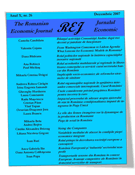Abstract:
Agriculture and manufacturing are two vital components of the economy. This article empirically explored the long-run and short-run impact of these two sectors on the economic development of Bangladesh and India by employing the ARDL model over the period from 1975 to 2019. The outcome of the F-bounds test confirmed the existence of a long-run relationship among the variables examined for both Bangladesh and India. The study then analyzed the short-run impact of the agriculture and the manufacturing on economic growth for Bangladesh and India. The short-run coefficients revealed that there exists a positive impact of the agriculture and the manufacturing sectors on economic growth for both Bangladesh and India. Findings further showed that both agriculture and manufacturing led to the long-run economic development of Bangladesh. Whereas, in India, only the manufacturing sector proved to have a positive long-run impact on economic advancement as, in the long run, India’s agriculture demonstrated an insignificant and weak influence on economic development. Hence, it is noteworthy that the manufacturing sector solely served as the engine of economic growth of India. On the other side, both agriculture and manufacturing led to Bangladesh’s growth. The study concluded that Bangladesh should provide equal importance to both the agricultural and manufacturing sectors to achieve long-run economic development. This paper also recommended that the Indian Government should promote long-term agriculture development projects. Above all, to attain steady economic growth, agriculture, along with the manufacturing sector should be developed concurrently.
